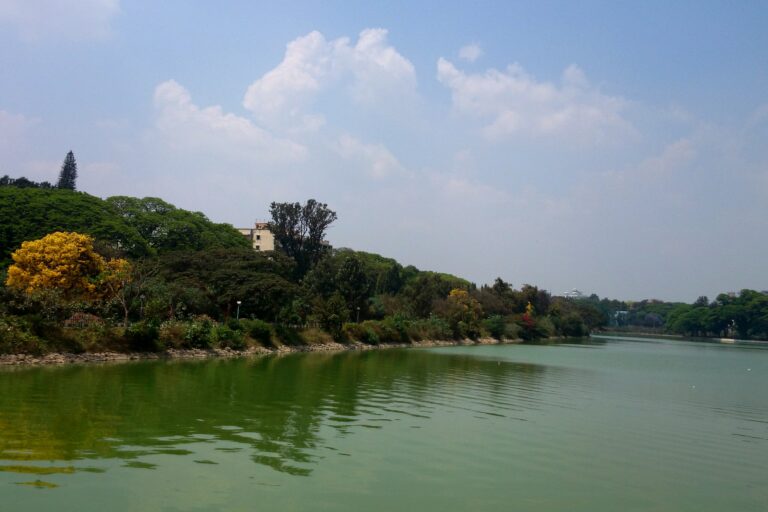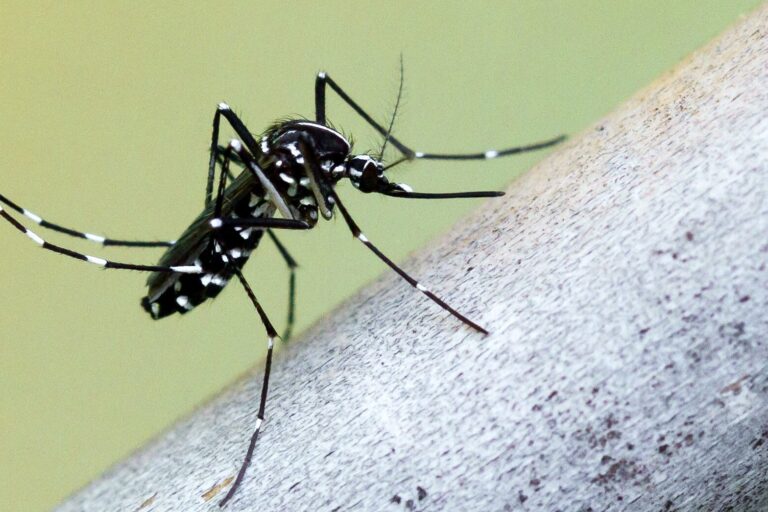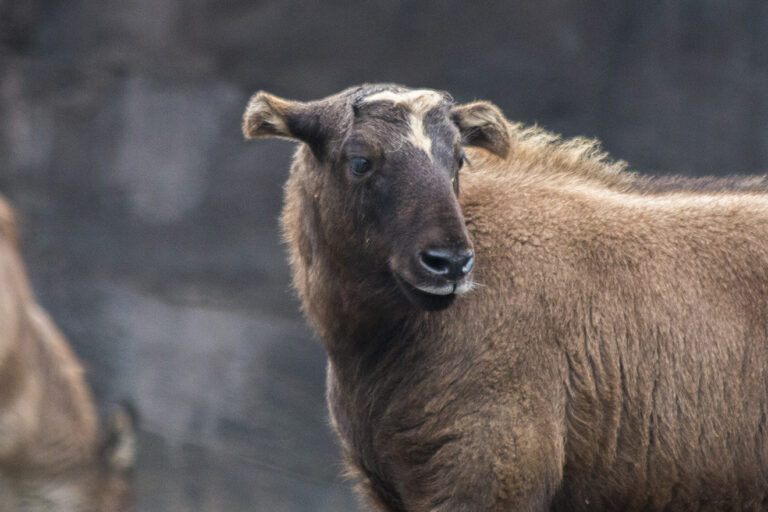- A marketing official-turned-farmer returned to his village to innovate with technology and modernise his farm.
- He used artificial intelligence and digital tools for water management, early disease detection and better crop monitoring.
- This has helped in increased yields, reduced water usage and improved crop health.
In 2020, when the world was struggling with the coronavirus disease pandemic (COVID-19) and businesses were closing, Binod Kumar Mahto, who had been associated with the marketing department of a bank in Pune for a decade, decided to return to his village in the Hazaribagh district of Jharkhand.
The first challenge after returning was to find a permanent source of income. Mahto, who hails from the Churchu block of the district and belongs to a farming family, says, “We thought of doing something that required unskilled workers. After coming back to Jharkhand, I realised that these non-skilled workers form a chunk of unemployed workers in the state. Farming is the primary occupation in Jharkhand, so we decided to explore possibilities in that sector.”
Mahto, a Physics Honours graduate and MBA, tells Mongabay India, “I could not find such a large piece of land near my house, so we scouted for land in the Daadi block. We leased the land and started farming using modern techniques in September 2020. Since I lived in a modern city which enabled me to develop modern thinking, I wondered why I should farm in a traditional way.” He started growing vegetables on 10 acres of land, and today, he is farming on 20 acres.

Farming through AI, apps and digital methods
Mahto now has three gardens: Sundarban Krishi Vatika (10 acres), Vrindavan Krishi Vatika and Madhuban Krishi Vatika (five acres each). He installed lights, cameras and water systems powered by solar energy to modernise these farms.
All three farms have a tool to detect soil moisture. In Sundarban, the entire irrigation system is automated; instructions are given through a digital app, and the system operates accordingly.
Mahto has adopted mulching technology to grow vegetables on his farms, where drip irrigation is essential. He covers the top layer of soil, which has many benefits: It saves water, protects the soil from erosion during heavy rains and increases soil fertility. He has also linked drip irrigation to AI, automating the entire irrigation system.
Talking about the system, Mahto says, “There is a tower installed here and I have an app on my mobile. Whatever direction I give through the app is communicated via the tower’s network.”
He further explains, “The Sunderban farm is divided into four plots, each with its own water valve. The soil moisture monitoring system informs me through the app about the moisture or dryness in each plot. If there is a water shortage in the second plot, I can automatically turn on the valve for that plot and irrigation starts. In fact, I can start and stop the motor through my mobile.”
The automatic irrigation system installed in Sundarban is from Cultyvate, a Bengaluru-based company that offers various services to farmers. The company claims that using its irrigation system can increase yield by 20% and reduce water uses for irrigation by 50%.
Anant Bahadur, principal scientist at the Vegetable Production Division at the Indian Vegetable Research Institute, Varanasi, says that adopting AI has many benefits. He tells Mongabay India, “There are three big advantages. First, one can detect diseases in advance and control them. The second advantage is that with the help of sensors or AI, crops can receive precisely the amount of water they need. The underground sensors can make 100% accurate predictions. The third advantage is that accurate information about soil nutrients is available. The use of AI has increased in developed countries and is rising here too. In the coming years, everything will be done through sensors and AI.”
Bahadur says, “Many types of diseases occur due to the change in weather. If it rains in winter, some diseases may affect plants. AI will provide this information.”
Mahto says that in the initial days, while researching on the internet, he learned about the schemes promoted by the National Bank for Agriculture and Rural Development (NABARD). “When I came to know about automated irrigation technology, I contacted NABARD.”
“It was our project under which he (Mahto) got financial help through IFFCO (Indian Farmers Fertiliser Cooperative) for Internet of Things (IoT),” says Richa Bharti, district development manager of NABARD in Hazaribagh district, while talking to Mongabay India. She informs that with such technology, weather forecasts are available in advance, which benefits the farmers. Also, one can know about the nutrients present in the soil.

Suraj Sinha, senior manager at IFFCO-Kisan Finance Ltd, a non-banking financial company promoted by IFFCO, tells Mongabay India, “We found that while drip systems were being installed, the farmers had no control over irrigation, which was being done for four to five hours daily. We conducted a pilot project and found that irrigation was required once every two or three days. This helped save water as well as electricity.” He adds that technology can help farmers to know when the plants need water.
He adds, “The water requirement of crops varies at each stage. The need for water is the most at the time of ripening. Effective water management will help in keeping 90% of crops healthy. It will also reduce the risk of infection in crops.”
IFFCO-KISAN has installed IoT sensors in more than 200 farms in 15 states so far and has helped install automated irrigation systems in more than 50 farms. “Precision Farming with the help of sensors helps to cope with the effects of climate change and is very helpful to reduce input cost up to 25 to 30 % and increase output by 30 to 40%,” a note from IFFCO Kisan claims.
Automatic weather system
A weather forecasting system is also installed on the Sundarban farm. Through this system, Mahto gets a 10-day weather forecast. This helps him make the right decisions regarding fertiliser and irrigation. This system belongs to the Fyllo company, which has been providing numerous facilities to farmers since 2019.
The company said in an email response to Mongabay India, “Our units measure soil moisture, soil temperature, leaf moisture, light intensity, air temperature, air humidity, air pressure and wind speed, wind direction and rain. The captured data is sent to the company’s cloud servers for analysis and is processed using machine learning and AI agronomy models. Using this data, we give suggestions to farmers as per their crops. This information includes tips like how much to irrigate, when to irrigate, the precise schedules of fertilisers and sprays, information about disease and pest forecasts, weather forecasts, as well as climate-based suggestions.”
The company claims it helps farmers make accurate decisions, which helps them increase their yield by 20%. At the same time, it helps increase farming productivity by helping them produce 90% export-quality products while enabling a 25% reduction in required resources. The company charges a one-time fee of around Rs. 50,000, and farmers have to bear the installation cost.
Mahto says that the direction and speed of the wind can be very useful to the farmers while spraying pesticides or medicines. If you know both these things, then the effect of the pesticides will be far-reaching, and there will be less wastage.

In Jharkhand, 38 lakh hectares of land is suitable for farming, of which farming is done on 25 to 26 lakh hectares. Agriculture in Jharkhand is still largely dependent on uncertain weather, which is becoming even more unpredictable due to climate change. The reliance on rain is so high that 92% of the total cultivable area does not have irrigation facilities. However, efforts are being made to increase the number of irrigation facilities. The area under gross irrigation in Jharkhand has increased from 2.47 lakh hectares in 2017-18 to 2.91 lakh hectares in 2021-22. Due to this, cropping intensity has also improved — it increased from 145% in 2019-20 to 172% in 2022-23.
According to the Food and Agriculture Organization, cropping intensity measures how often a piece of land is cultivated. Sudarshan Maurya, principal scientist at the Indian Vegetable Research Institute in Varanasi, tells Mongabay India, “The cropping intensity in Jharkhand means that currently about two crops are grown here. Seen from this perspective, there is every possibility of taking the third crop in the state. This work can be done by incorporating technology in farming.”
Many challenges in widespread use
There are many challenges in the widespread adoption of such a technology in India. These include a large number of marginal farmers, the financial condition of farmers, and the lack of access to digital technology, technical expertise, and related infrastructure. For example, according to the National Sample Survey Office (NSSO), the percentage of agricultural families in India with land holdings of less than two hectares is 89.4%. The size of land holdings in India is continuously decreasing. In the year 1970-71, this size was 2.28 hectares, which came down to less than half i.e. 1.08 hectares in 2015-16. Its effect is also visible in the income of farmers. If we talk about Jharkhand, the average monthly income of farmers here is Rs. 4,895, which is less than half of the national average.

In March, several government agricultural departments released a technical report, Revolutionizing Agriculture: Digital Transformation of Farming. The report also discusses the challenges faced in adopting such technology in India.
The report says, “One of the primary challenges is ensuring widespread adoption of AI and IoT technologies among farmers, especially in rural areas. Limited awareness, access to technology, and technical expertise may hinder adoption rates. Providing training and support to farmers is essential to overcome this barrier.” The report also mentions other possible challenges like inadequate infrastructure, including electricity and internet connectivity, the cost of implementing AI and IoT systems, and lack of maintenance and technical support at the local level.
The report also mentions, “The agricultural domain is also facing numerous challenges related to increased productivity, climate change, crop health monitoring, water management, and optimal use of fertilisers. To address these challenges, IoT technology and AI/ML are opening up new, promising technological paths and pushing the future of agriculture to the next level.”
This story was reported by Mongabay-India’s Hindi team and first published here on our Hindi site on September 3, 2024.
Banner image: Bottle gourds from Mahto’s farm being prepared for market dispatch. Image by Vishal Kumar Jain.













